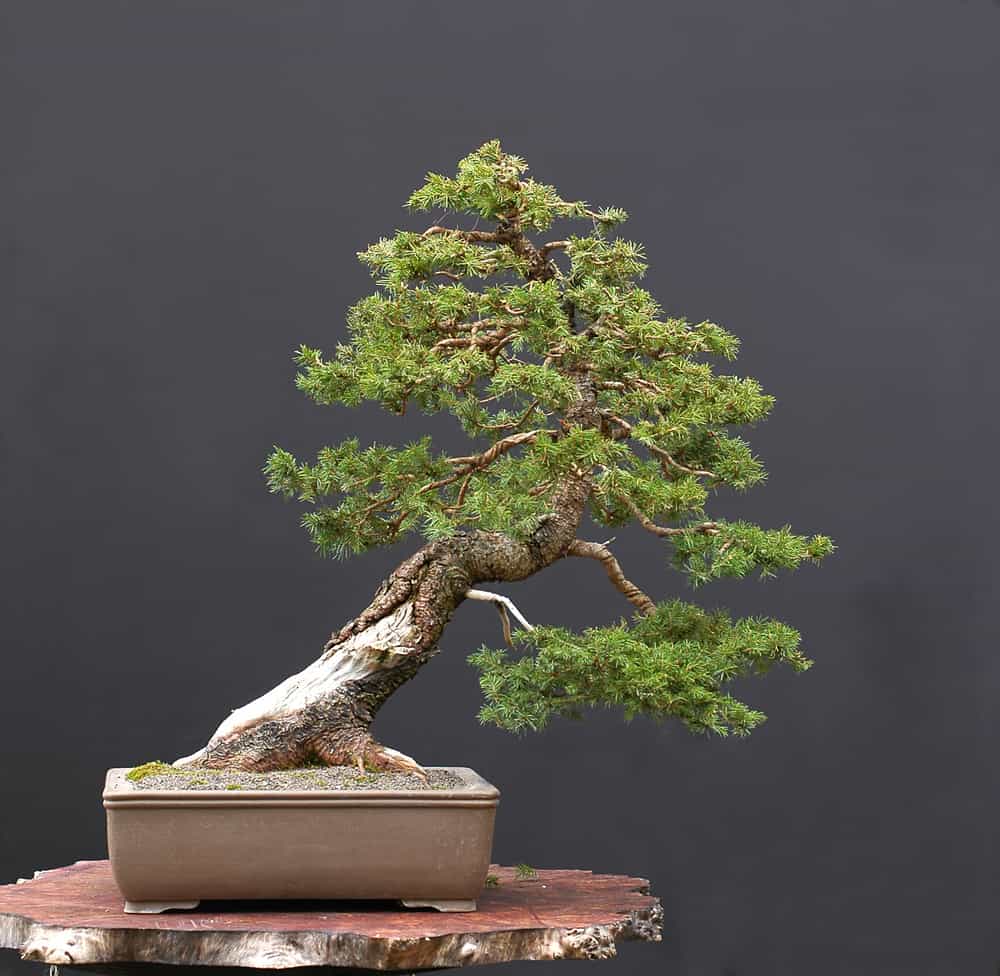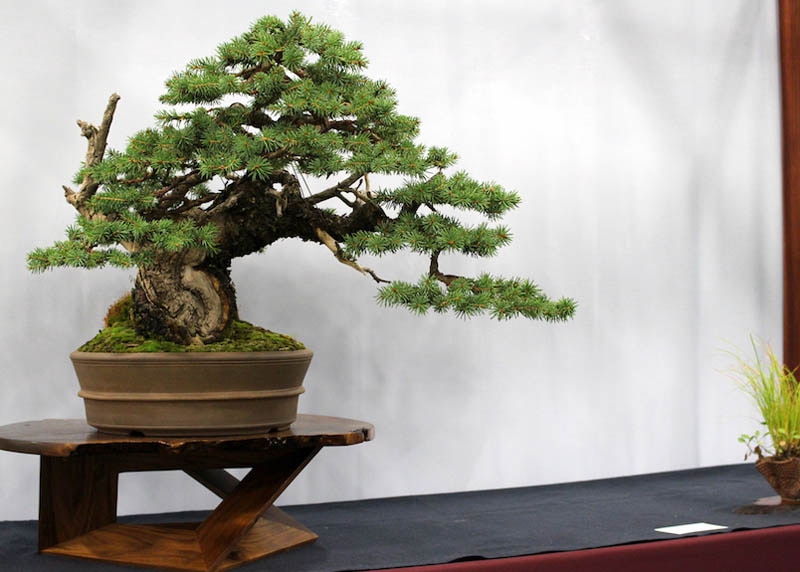Spruce bonsai trees need proper watering, sunlight, and pruning for optimal growth. Ensure well-draining soil and consistent care.
Spruce bonsai trees, with their elegant foliage and compact form, make exquisite additions to any bonsai collection. Native to cooler climates, these trees require specific care to thrive indoors or outdoors. Watering is crucial; keep the soil moist but not waterlogged.
Provide ample sunlight, ideally through direct or filtered light. Pruning helps maintain their shape and encourages healthy growth. Use well-draining soil to prevent root rot and fertilize during the growing season. Regularly check for pests and diseases. Consistent care and attention will reward you with a stunning, miniature evergreen tree that brings a touch of nature’s beauty into your space.
Introduction To Spruce Bonsai
Spruce Bonsai trees require proper care, including regular pruning, adequate sunlight, and well-drained soil. Maintaining humidity levels and protection from extreme weather ensures a healthy growth. Regular watering and occasional fertilization support their vibrant appearance and longevity.
Origins And Varieties
Spruce bonsai trees come from northern regions. These trees are strong and can live in cold places. Common varieties include Norway spruce and Colorado blue spruce. Each variety has unique features. Norway spruce grows fast and has dark green needles. Colorado blue spruce has blue-green needles and grows slowly. Both types make beautiful bonsai trees. They are popular among bonsai enthusiasts.
Benefits Of Growing Spruce Bonsai
Spruce bonsai trees are easy to care for. They are perfect for beginners. These trees can survive in different environments. They can be grown indoors or outdoors. Spruce bonsai trees also help reduce stress. Taking care of them can be relaxing. They add beauty to your home or garden. Spruce bonsai trees can also improve air quality.
Choosing The Right Spruce Bonsai
Pick a tree with bright green needles. Check for any signs of pests. Look for a strong trunk and healthy roots. Ensure the soil is moist but not soggy. Avoid trees with drooping branches. Healthy trees have firm, vibrant needles. Soft or brown needles indicate poor health.
Here are some popular types:
- Norway Spruce
- Blue Spruce
- White Spruce
- Engelmann Spruce
- Sitka Spruce
Ideal Growing Conditions
Spruce bonsai trees thrive in well-drained soil, ample sunlight, and moderate humidity. Regular watering and occasional fertilization ensure healthy growth.
Light Requirements
Spruce bonsai trees need bright light. Place them where they get full sun. Morning sun is best. Avoid direct afternoon sun. Too much shade can weaken the tree. A sunny windowsill works well. Rotate the tree often. This helps even growth. Artificial light can help in winter.
Optimal Temperature And Humidity
Spruce bonsai trees like cool temperatures. Ideal range is 60-70°F (15-21°C). Avoid extreme heat. High temperatures can stress the tree. Keep humidity around 50-70%. Use a humidity tray if needed. Mist the tree regularly. Dry air can harm the tree. Proper ventilation is important. Fresh air helps keep the tree healthy.

Credit: www.bonsaiempire.com
Watering Techniques
Proper watering techniques are crucial for Spruce Bonsai tree care. Ensure the soil stays moist but not waterlogged. Regularly check the moisture level to prevent overwatering.
Frequency And Amount
A spruce bonsai tree needs water often. Check the soil daily. Water it when the topsoil is dry. Use a small amount of water each time. Overwatering can harm the tree. It can lead to root rot.
Best Practices For Watering
Use a watering can with a fine nozzle. This helps control the water flow. Ensure all parts of the soil get wet. Avoid wetting the leaves too much. Water in the morning. It helps the soil dry out during the day. This prevents mold and mildew.
Soil And Fertilization
A good soil mix is very important. It should drain well and hold moisture. Use a mix of Akadama, pumice, and lava rock. This mix gives the tree the best chance to grow strong. The soil should not be too dense. It should let air reach the roots.
Fertilize the tree every two weeks in spring and summer. Use a balanced fertilizer. In fall and winter, fertilize once a month. Always follow the package directions. Over-fertilizing can harm the tree. Dilute the fertilizer if needed. Organic fertilizers are also good. They release nutrients slowly.

Credit: www.bonsaiable.com
Pruning And Shaping
Pruning a spruce bonsai tree requires specific tools. Use sharp scissors or shears to avoid damaging the tree. A small pair of wire cutters is also essential. These tools help in shaping the tree branches. Always sterilize your tools before use. This prevents diseases from spreading.
Techniques for pruning include trimming and pinching. Trimming involves cutting back new growth. Pinching is done by hand to remove small buds. Both methods control the tree’s shape and size. Regular pruning ensures a healthy and attractive bonsai.
| Season | Pruning Tips |
|---|---|
| Spring | Prune new growth lightly. Focus on shaping the tree. |
| Summer | Trim longer shoots. Maintain the bonsai’s form. |
| Fall | Remove dead or weak branches. Prepare for winter. |
| Winter | Minimal pruning. Let the tree rest. |
Pest And Disease Management
Proper pest and disease management ensures a healthy Spruce Bonsai tree. Regularly inspect for pests, treat infestations promptly, and maintain optimal conditions to prevent diseases.
Common Pests And Diseases
Spruce bonsai trees often face pests like aphids, spider mites, and scale insects. These pests suck the sap from the tree. This weakens the tree and can lead to disease. Common diseases include root rot and needle cast. Root rot happens due to overwatering. Needle cast is a fungal disease that causes needles to drop. It’s important to check for these problems often to keep your tree healthy.
Prevention And Treatment
Keep your bonsai tree healthy to prevent pests and diseases. Ensure it has the right amount of water and sunlight. Use neem oil or insecticidal soap to treat pests. Remove any infected leaves or branches. For root rot, make sure the soil drains well. Avoid overwatering. If needle cast occurs, remove affected needles and branches. Use a fungicide to treat the tree. Regularly inspect your tree to catch problems early.
Repotting Your Spruce Bonsai
Repot your spruce bonsai every two years. The best time is early spring. Roots grow best in this season. Always check for root-bound conditions. This means roots fill the pot entirely. Repotting helps the tree grow strong and healthy.
Gather all necessary tools. This includes a new pot, bonsai soil, and scissors. Carefully remove the tree from its current pot. Gently shake off old soil from the roots. Trim any long or dead roots. Place the tree in the new pot. Add fresh bonsai soil around the roots. Water the tree well after repotting.
Winter Care Tips
Spruce bonsai trees need protection from frost. A simple way is using a frost cloth. This cloth helps keep the tree warm. Another way is to move the tree indoors. Choose a cool and bright room for the tree. Watering should be less frequent in winter. Do not let the soil dry out. Check the tree daily for signs of frost damage.
Winter care routines need changes. Reduce watering but keep the soil moist. Avoid fertilizing the tree in winter. Prune the tree lightly to remove dead branches. Ensure the tree gets enough light. Use grow lights if natural light is insufficient. Monitor the tree’s health regularly. Look for signs of stress or pests.

Credit: www.bonsaiempire.com
Conclusion And Final Tips
Proper care ensures a healthy spruce bonsai tree. Maintain balanced watering, regular pruning, and appropriate sunlight exposure for best results.
Summary Of Key Points
Spruce bonsai trees need regular watering. Their soil should be moist but not soggy. They prefer bright but indirect sunlight. Too much direct sun can harm them. Pruning helps maintain their shape. Fertilize them during the growing season. Use a balanced fertilizer for best results. Repotting is necessary every 2-3 years. This helps refresh the soil and encourages growth.
Long-term Care Advice
Keep your spruce bonsai in a stable environment. Avoid extreme temperature changes. Check for pests and diseases regularly. Treat problems early to prevent damage. Wiring helps shape the tree. Be gentle to avoid damage. Monitor the tree’s health and adjust care as needed. Consistent care ensures a healthy, beautiful bonsai.
Conclusion
Caring for a spruce bonsai tree can be rewarding. Ensure proper watering, sunlight, and pruning for a healthy tree. Regular maintenance helps the bonsai thrive. Follow these tips and enjoy your beautiful, miniature tree. Happy bonsai gardening!

